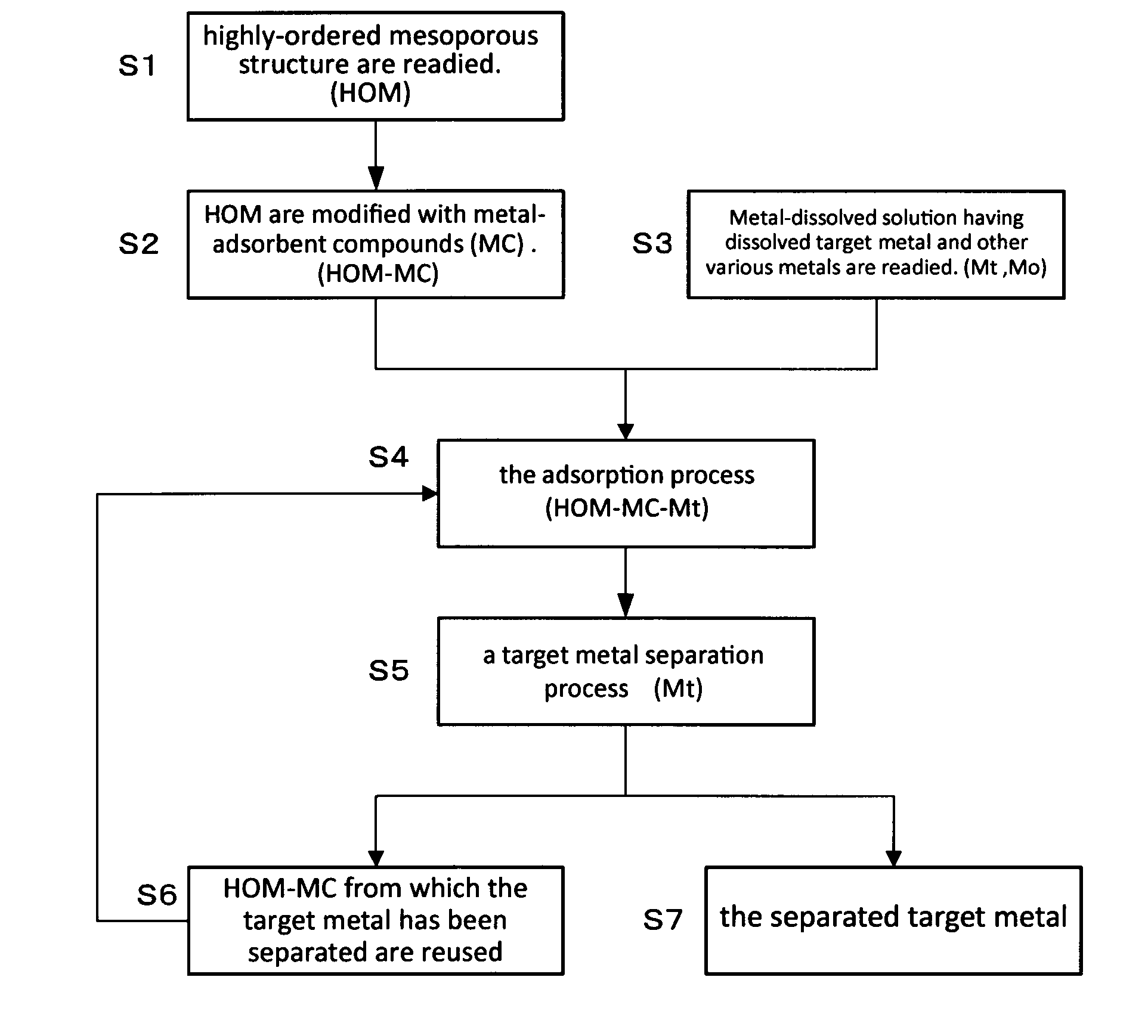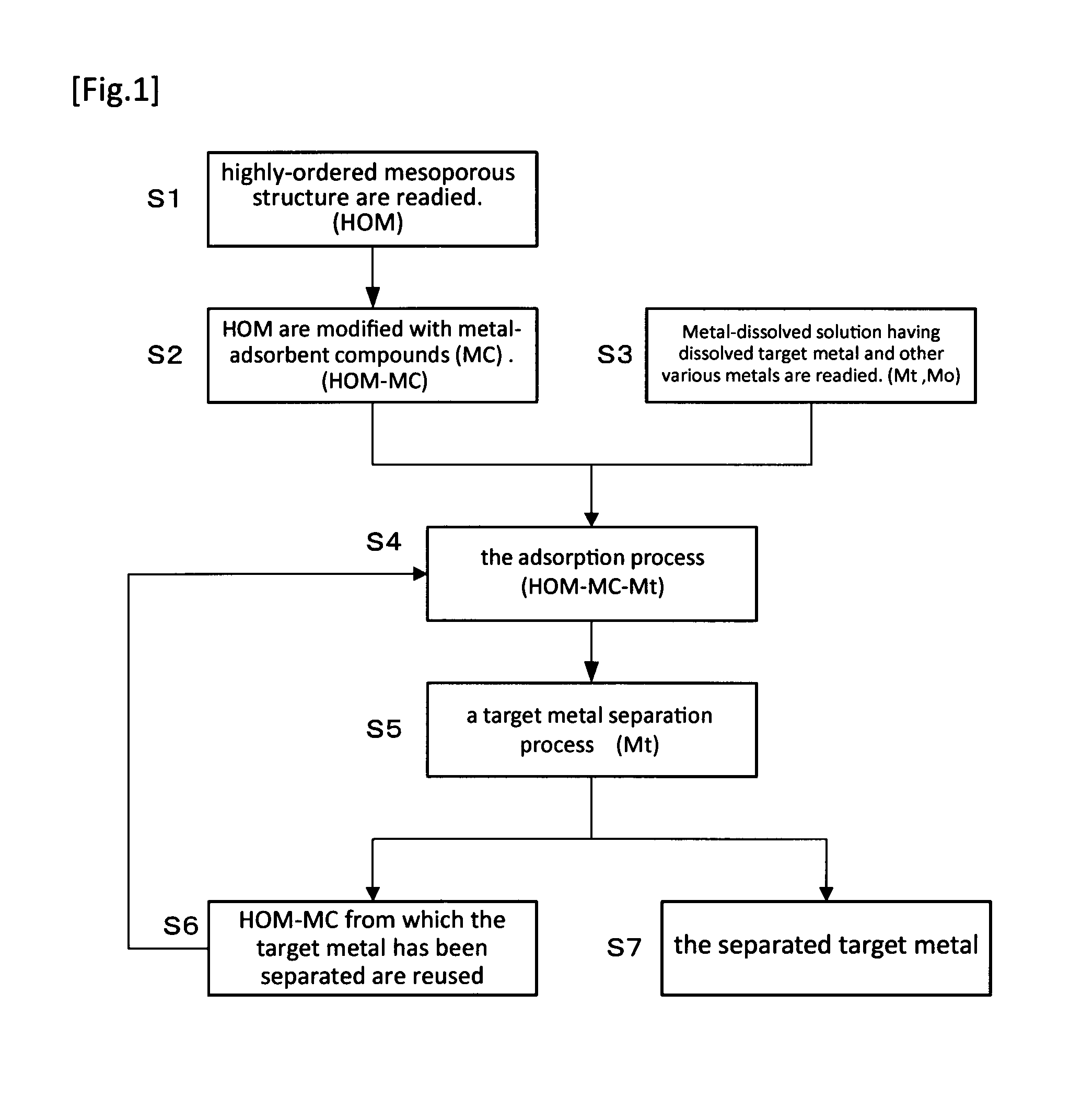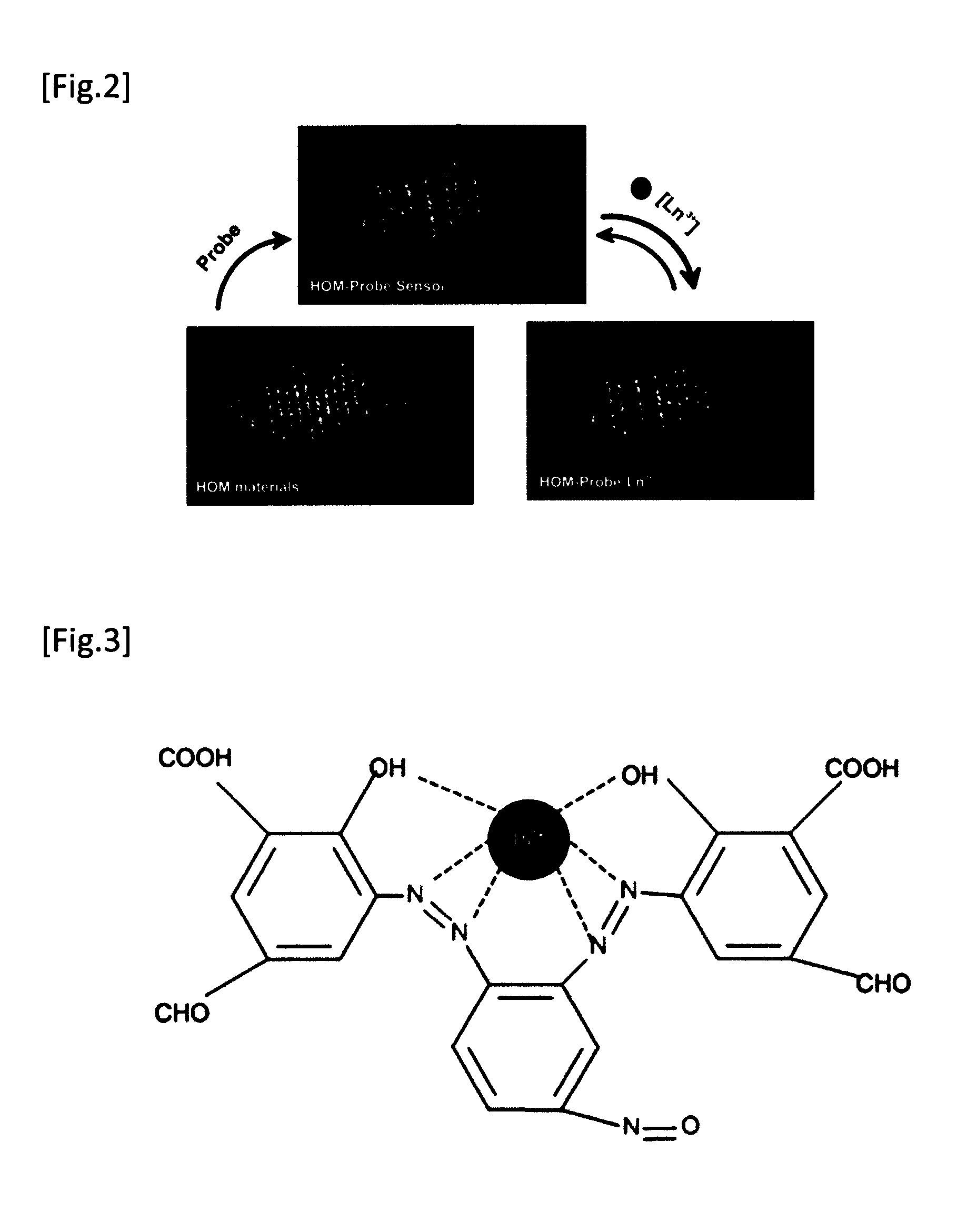Method For Extraction And Separation Of Lanthanoid Elements And Actinoid Elements, And Means For Extraction And Separation Of Lanthanoid Elements And Actinoid Elements
- Summary
- Abstract
- Description
- Claims
- Application Information
AI Technical Summary
Benefits of technology
Problems solved by technology
Method used
Image
Examples
embodiment 1
[0068]The present embodiment is an example of the use of a HOM modified with an azo reagent to recover one of the lanthanoid elements. The azo reagent that was used is DTAR (4-(2-thiazylazo)6-dodecylresorcinol). As comparison examples 1 and 2, a similar method of adsorption / separation / recovery was tried also using nitrogen-containing non-color reacting spectroscopic reagents (N,N′bis(salicylidene) dodecane-1,12-diamine (BSDD) and 2-hydroxy-3-((2-mercaptophenylimino)methyl)benzoic acid (HMPB)). “Non-color reacting spectroscopic reagent” refers to organic indicator dye reagents that do not exhibit a color reaction when interacting with lanthanoid elements or actinoid elements.
[0069]The HOM was obtained by mixing TMOS (tetramethoxysilane) and surfactant F108, which provides a template structure, at a ratio of 0.7 (TMOS) to 1 (surfactant F108). The solution was then heated to 50° C. to 60° C. and stirred for 1 to 2 minutes. This was followed by the addition of hydrochloric acid and a ca...
embodiment 2
[0072]FIG. 8 shows photos (top portion of the figure) of the color reaction and the UV-vis spectroscopy that was obtained with a HOM silica modified with 4-(2-pyridylazo) resorcinol (PAR) serving as the metal-adsorbent compound when only Yb3+ ions were added in different concentrations (0 ppb, 0.5 ppb, 1 ppb, 5 ppb, 10 ppb, 50 ppb, 100 ppb, 500 ppb, 1000 ppb (1 ppm) and 2000 ppb (2 ppm)) to a solution with a pH of 7.0 in an experiment to measure wavelength dependence of light absorbance. FIG. 8 shows a peak near a light wavelength of 400 nm with a significant concentration dependence, confirming the capturing of lanthanoid element (Yb) complexes by the HOM-MC. FIG. 9 shows the Yb adsorption capacity of the PAR-modified HOM-MC that was determined by changing the pH of a solution (at room temperature) having 2 ppm of dissolved Yb as the sole lanthanoid element by the addition of NaOH and 0.2M (mole) of 3-morpholinopropanesulfonic acid (MOPS). The 3-morpholinopropanesulfonic acid (MOPS...
embodiment 3
[0073]FIG. 10 shows the effects of the addition of a lanthanoid element ion (Dy3+) to a HOM silica that was modified with N,N′disalicylidene-4-nitro-phenylenediamine (DSNPD) which exhibits a quenching reaction. The figure shows the results of the measurement of the fluorescence signal from a DSNPD-modified HOM-MC for a 20 ml solution with a pH of 7 at 25° C. with the lanthanoid element ion added. The solution was adjusted to have a pH of 7 by the addition of NaOH and 0.2M (mole) of 3-morpholinopropanesulfonic acid (MOPS). FIG. 10 shows that as the amount of added lanthanoid element (Dy3+) increases, the intensity of the fluorescence signal decreases, confirming that the lanthanoid element complexes were captured by the DSNPD-modified HOM-MC.
PUM
| Property | Measurement | Unit |
|---|---|---|
| Structure | aaaaa | aaaaa |
| Spectroscopic properties | aaaaa | aaaaa |
| Separation | aaaaa | aaaaa |
Abstract
Description
Claims
Application Information
 Login to View More
Login to View More - R&D
- Intellectual Property
- Life Sciences
- Materials
- Tech Scout
- Unparalleled Data Quality
- Higher Quality Content
- 60% Fewer Hallucinations
Browse by: Latest US Patents, China's latest patents, Technical Efficacy Thesaurus, Application Domain, Technology Topic, Popular Technical Reports.
© 2025 PatSnap. All rights reserved.Legal|Privacy policy|Modern Slavery Act Transparency Statement|Sitemap|About US| Contact US: help@patsnap.com



